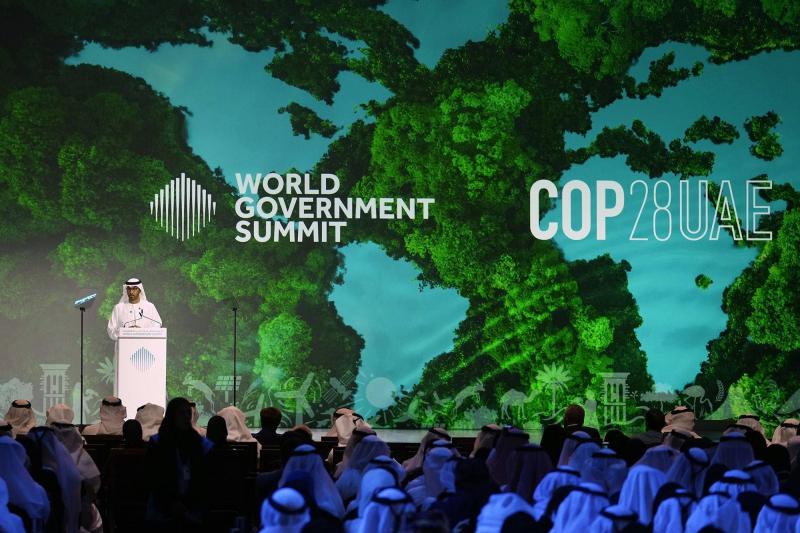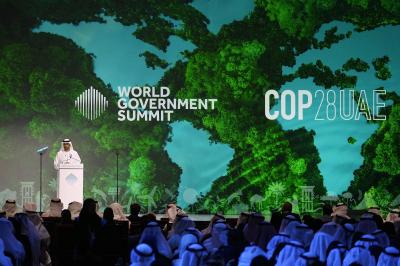Imagine a massive industrial exhibition hosting dozens of simultaneous political conferences, a few scenes of enthusiastic protests, and a crowd rushing to catch a glimpse of a celebrity concerned about climate change. This is the expected scene at the annual United Nations Climate Conference, taking place this year from November 30 to December 12 in Dubai, UAE. More than 70,000 people from about 200 countries are expected to participate in COP28 this year.
**Opening Ceremony**
Last year, the UAE laid the diplomatic groundwork for this year's conference. However, it will formally take over the presidency during the opening session, which includes welcoming speeches and the approval of the conference's procedures and tasks. One of these procedures will be the approval of the official agenda, which could be a significant moment if a new and vital issue is introduced as happened at COP27.
**The Scene**
During the first few days, leaders will attend what is called the "high-level segment," which includes consecutive speeches in the main conference hall. They often exceed the three-minute time limit. Leaders also speak at side events, press conferences, or in bilateral meetings about what they believe the conference should achieve. The aim of this activity is to boost ambitions and set the conference on the right path.
**The Location**
The "Blue Zone," designated for these official discussions, also hosts country pavilions or temporary offices for each national delegation participating in the conference. Some of these spaces are decorated or equipped with promotional materials, where participating countries use them to hold meetings aimed at networking or promoting national brands or projects. Only accredited participants can enter this area. Another area, called the "Green Zone," features display booths run by companies and non-profit groups, as well as climate activists from around the world. In this warehouse-like space open to registered attendees, one can easily grab free coffee, listen to sales pitches from various nationalities, or enjoy a cultural performance by indigenous Amazon residents.
**The Back Rooms**
While leaders and lobby groups appear in public, national delegations comprising ministers and government staff remain behind the scenes negotiating the details of the final summit agreement. Each agenda item represents a separate negotiation track and is addressed simultaneously through various working groups. These efforts, which form the majority of the mechanisms aimed at addressing climate change, seek gradual progress from year to year. Agreements must be reached by consensus, and achieving this consensus among nearly 200 countries can be slow.
**Daily Themes**
The conference takes a specific shape in its public events, with organizers assigning themes for each day addressing a wide range of climate-related issues. This year's themes include everything from climate financing and education to youth, nature, and public health. In the middle of the summit, on December 7, organizers have designated a "rest day" when official programs will temporarily halt. However, country delegations often continue closed negotiations during that day, while industry leaders and non-profit organizations participate in side events.
**Negotiations**
Around the midpoint of the summit, the COP28 presidency starts working on a draft final agreement to monitor the progress achieved in the working group negotiations and the pledges made in the plenary session. The drafting of the agreement is the stage where the UAE presidency wields the most influence. At this point, divisions persist, and countries begin to exert pressure for support or negotiate concessions. Negotiators often seek new directives or mandates from their governments. Ministers join the discussions.
**The Time Struggle**
The final negotiations for a summit agreement, or "final declaration," take place during the last two days of the conference, shifting focus to what can be accomplished before the announcement of the conference's conclusion in the final plenary session. The final declaration is essentially a statement that outlines high-level political agreements on key issues, embodying what the summit has achieved and the broad goals agreed upon by each country.
**Ending the Conference**
In the final days, optimism for reaching a final decision often gives way to the reality of entrenched positions, requiring an extra day or two to reach an agreement. The duration of several past conferences, including COP27 last year, extended after opponents dispersed, and only negotiators, journalists, and cleaning staff remained. The conclusion can sometimes be eventful. At COP26, last-minute interventions and concessions heated up in front of news cameras in the main conference hall. However, the ending may also come quickly and without warning. At COP27, the conference was exhausting and concluded with an agreement late at night, leaving little time for review. The announcement of the conference's conclusion and the adoption of the final declaration marks an emotional peak. There are also smaller agreements that are ratified afterward, and the results of each working group are officially approved. Then everyone returns home for a well-deserved rest.




